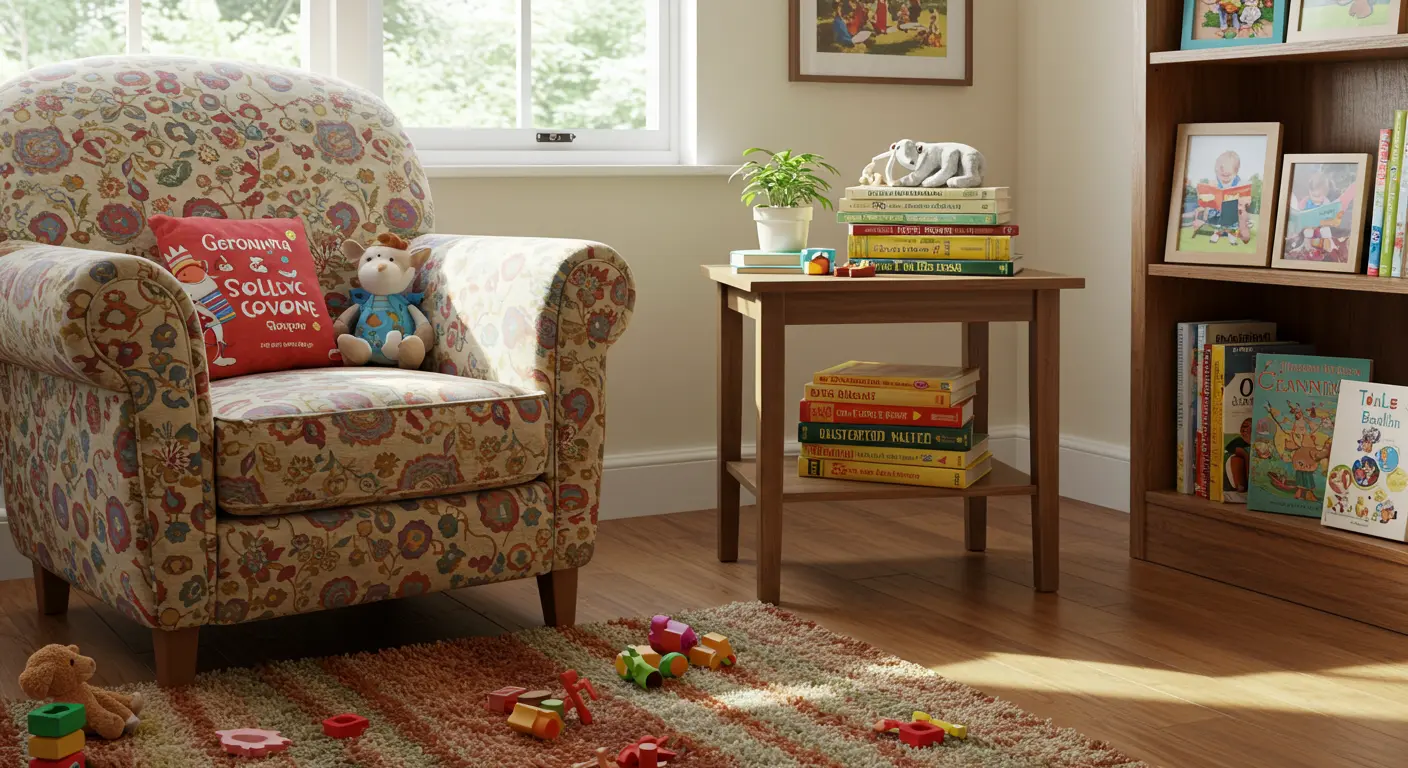Best Books for 8 Year Olds – Top Recommendations

Top Recommended Books for 8-Year-Olds
At this important age, children are blossoming into confident, independent readers. The most captivating books for 8-year-olds find the right balance—engaging enough to hold their attention while remaining accessible rather than overwhelmingly complex.
Series books work particularly well at this age. Here are some great options:
-
Geronimo Stilton: Adventures with colorful illustrations and exciting plots.
-
The 39 Clues: An interactive mystery series that keeps children engaged beyond the page.
-
Secrets of Drew: A magical fantasy series.
-
Roman Mysteries: Historically rich adventures.
-
Chest Gecko Mysteries: A detective-themed series.
-
13-Storey Treehouse / Tom Gates: Humorous, illustrated series that blend text and visuals.
Many individual titles are also perennial favorites:
-
The Mouse and the Motorcycle by Beverly Cleary
-
Charlie and the Chocolate Factory and James and the Giant Peach by Roald Dahl
-
The Lion, the Witch, and the Wardrobe by C.S. Lewis
-
The Phantom Tollbooth by Norton Juster
-
Igraine the Brave by Cornelia Funke
When selecting books, humor, adventure, and suspense work especially well. Yet remember—each child’s reading level and interests are unique. A mismatch can either spark frustration or diminish their growing confidence as readers.
Classic Books Every 8-Year-Old Should Read
Classic children’s literature weaves timeless tales that serve multiple purposes: they entertain, impart valuable life lessons, and enrich vocabulary. These benefits nurture both skilled readers and thoughtful young minds.
These classics span various genres that appeal to young readers:
-
Accessible Adventure: The Boxcar Children by Gertrude Chandler Warner and Magic Tree House by Mary Pope Osborne combine mystery and adventure with accessible language.
-
Relatable Humor: Barbara Park’s June B. Jones books delight with humorous and relatable school-day misadventures.
-
Expansive Fantasy: For advanced readers, series like J.K. Rowling’s Harry Potter, Rick Riordan’s Percy Jackson, or Suzanne Collins’ Gregor the Overlander introduce complex worlds and mythologies.
These beloved classics not only expand imagination and vocabulary—they help children develop a lasting love of reading through beloved stories.
Graphic Novels and Illustrated Books for Kids
Graphic novels and illustrated books work as helpful bridges for developing readers. They offer a visual pathway from picture books to text-heavy chapters—especially helpful for reluctant readers and visual learners alike.
Popular examples in this format include:
-
Diary of a Wimpy Kid by Jeff Kinney: Uses a humorous diary format with cartoons to chronicle relatable middle-school life.
-
Goosebumps (Graphic Novels) by R.L. Stine: Offer mild frights and suspense with illustrations that soften the scares.
-
The Magic School Bus: Blends narrative with scientific facts, using illustrations to explain complex topics.
-
Garfield by Jim Davis: Provides short, accessible comic strips with visual punchlines that build comprehension.
These formats are extremely valuable for building both literacy skills and confidence. They show that: visually-rich books can cultivate just as deep a love of reading as their text-heavy counterparts.
Engaging Series for Young Readers
Series books are excellent for building reading stamina and confidence. Familiar characters and settings create a cozy reading experience, while each new installment delivers fresh adventures that keep young readers eagerly turning pages.
Fresh series like The Underdogs—featuring shelter dogs turned mystery solvers—and Super Pancake, which marries humor with superhero antics, bring fresh appeal into young readers’ bookshelves.
Adventure and Fantasy Series for 8-Year-Olds
Adventure and fantasy series strongly appeal to young readers, drawing them in with thrilling narratives and enchanting magical elements. Beyond entertainment, they include important lessons about courage, friendship, and perseverance into unforgettable stories.
Rick Riordan’s Percy Jackson series effectively introduces young readers to Greek mythology through a modern demigod’s adventures. Advanced readers will find the early books particularly engaging. This combination of contemporary settings with ancient mythological elements provides an appealing introduction to fantasy literature.
C.S. Lewis’s The Chronicles of Narnia—especially The Lion, the Witch and the Wardrobe—remains a fantasy masterpiece that has enchanted generations. Its clear battle between good and evil, populated with talking animals and magical realms, speaks directly to the 8-year-old imagination.
For readers craving humor alongside their adventures, series like Super Pancake by Megan Wagner Lloyd offer the ideal mix of silly situations and heroic quests. Meanwhile, The Underdogs effectively combines lovable animal characters with engaging mystery-solving escapades.
These genres do much more than entertain. They cultivate empathy, expand vocabulary, and sharpen critical thinking skills—ultimately inspiring children to embrace reading as a lifelong passion.
Humorous Books to Keep Kids Laughing
Humor has great influence in the reading world, often helping reluctant readers by transforming them into enthusiastic bookworms. It creates joyful associations with books that can last a lifetime.
-
Roald Dahl: A master of the genre, his classics like James and the Giant Peach blend the absurd with the relatable in ways that resonate with a child’s developing sense of humor.
-
Judy Blume: The Fudge series offers a hilarious and realistic take on family life, centered on the antics of an exasperating but lovable younger brother.
-
Beverly Cleary: The Ramona Quimby books capture family dynamics with humor and heart, reflecting real-life sibling relationships that make children feel seen.
These laugh-out-loud books serve two purposes: they build reading fluency while developing emotional intelligence. Characters who tackle life’s challenges with resilience and humor become powerful role models for young readers.
Choosing the Right Books for Your Child
Choosing the perfect book takes careful consideration—it requires balancing a child’s reading ability with their personal passions to create enthusiasm for reading.
Rather than depending only on age recommendations, thoughtful parents turn to book review resources to investigate a book’s themes, content, and reading level before making their selection.
A child’s interests matter enormously. A book exploring their favorite topic will likely captivate them, even if it stretches their reading abilities slightly.
The best approach? Blend parental wisdom with child autonomy. Curate a selection of age-appropriate options, then empower your child to make the final choice.
Remember the main goal: fostering pure enjoyment. When books align with both ability and interest, they create magical reading experiences that naturally encourage independence.
Understanding Reading Levels and Preferences
Reading levels provide useful guidance rather than strict rules. At eight, children’s reading abilities span an impressive range—from early chapter books to sophisticated middle-grade novels.
Multiple formal systems categorize reading levels: Exile measures, Guided Reading levels, and DRA (Developmental Reading Assessment) levels, to name a few. While these provide valuable starting points, they can’t measure interest or background knowledge—two factors that dramatically influence comprehension.
The “five-finger rule” offers a practical field test: have your child read a page, raising one finger for each unfamiliar word. Five or more fingers up? The book might be too challenging for solo reading adventures.
Learning about your child’s reading preferences is equally crucial. Some children gravitate toward realistic fiction that mirrors their own world, while others crave fantasy realms that stretch their imagination to new limits. Some thrive with text-heavy narratives; others flourish when illustrations support their comprehension journey. The books your child enjoys most will give you helpful insights about their reading preferences.
The ideal approach? Balancing reading level with personal passion. A challenging book about dinosaurs can prove far more engaging than an easy story about unfamiliar topics.
The Role of Parents in Encouraging Reading
Parents play a key role in shaping of their child’s reading universe. Their active involvement is important for cultivating a deep, lasting love of reading as children spread their independent wings.
-
Create dedicated reading time. Continuing family read-alouds demonstrates that reading is a valued activity and exposes children to richer vocabulary and more complex stories.
-
Discuss books together. Asking simple questions like “What was your favorite part?” encourages deeper engagement and develops critical thinking skills.
-
Model good reading habits. When children see adults reading for pleasure, they learn that reading is an enjoyable lifelong activity, not just a school assignment.
Through active participation in your child’s reading adventure—celebrating victories, navigating obstacles, and exploring libraries together—you’re building the groundwork for a lifelong reading habit that will enrich their entire future.





